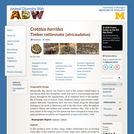
Crotalus horridus: Information
- Subject:
- Life Science
- Zoology
- Material Type:
- Reading
- Provider:
- University of Michigan Museum of Zoology
- Provider Set:
- Animal Diversity Web
- Author:
- Ann Falk (author), University of Michigan
- Date Added:
- 10/17/2002

Crotalus horridus: Information

Cygnus atratus: Information
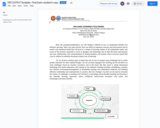
CPE/DPE
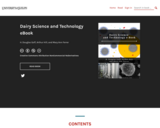
This is a textbook for learning about dairy science and technology.
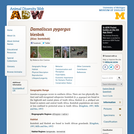
Damaliscus pygargus: Information
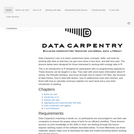
Data Carpentry lesson from Ecology curriculum to learn how to analyse and visualise ecological data in R. Data Carpentry’s aim is to teach researchers basic concepts, skills, and tools for working with data so that they can get more done in less time, and with less pain. The lessons below were designed for those interested in working with ecology data in R. This is an introduction to R designed for participants with no programming experience. These lessons can be taught in a day (~ 6 hours). They start with some basic information about R syntax, the RStudio interface, and move through how to import CSV files, the structure of data frames, how to deal with factors, how to add/remove rows and columns, how to calculate summary statistics from a data frame, and a brief introduction to plotting. The last lesson demonstrates how to work with databases directly from R.
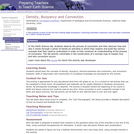
This 3-hour hands-on guided-discovery lab activity teaches students the concepts of density, buoyancy, thermal expansion and convection.
(Note: this resource was added to OER Commons as part of a batch upload of over 2,200 records. If you notice an issue with the quality of the metadata, please let us know by using the 'report' button and we will flag it for consideration.)
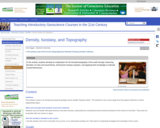
Show caption
HideA critical component of this activity involves sharing team data with the entire class, done the old-fashioned way on the chalkboard. Details This activity begins with an exploration of a topographic map of the earth, ending with the question: Why is the distribution of topography on the earth bimodal? The students then collect two forms of data. They measure the density of the most common rocks that make up oceanic crust (basalt), continental crust (granite), and the mantle (peridotite). They also measure the density of several different kinds of wood, and how high each kind floats in a tub of water. In each case, they work in teams of two or three and then the entire class shares their data. Based on the data from the wood, they derive an equation that relates the density of the wood to the height at which the block floats in the water - the isostasy equation. They then substitute density values for real rocks into their equation to derive thicknesses for average continental and oceanic crust, and apply their knowledge in order to draw a cross-section of the crust across South America. This activity gives students a real, hands-on and mathematical understanding of the principle of isostasy.
(Note: this resource was added to OER Commons as part of a batch upload of over 2,200 records. If you notice an issue with the quality of the metadata, please let us know by using the 'report' button and we will flag it for consideration.)
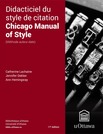
Short Description:
Ce didacticiel du style de citation Chicago est une adaptation du didacticiel d’introduction à la APA en français de la Bibliothèque de l’Université de l’Alberta. Il a été créé par le personnel de la bibliothèque de l'Université de d'Ottawa dans le but d'offrir une ressource en français aux étudiants et aux professeurs qui utilisent ce style dans leurs champs d'études et de recherches.
Long Description:
Le didacticiel discute de l’importance des citations et explique en détails les principaux éléments des références et des citations dans le texte d’après les directives de la 17e édition du manuel du style de citation Chicago. Une lecture en profondeur d’au moins une heure et demie est nécessaire pour atteindre les objectifs d’apprentissage. Ce didacticiel peut également être utilisé comme ressource de référence.
Word Count: 3025
(Note: This resource's metadata has been created automatically by reformatting and/or combining the information that the author initially provided as part of a bulk import process.)
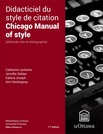
Short Description:
Ce didacticiel du style de citation Chicago est une adaptation du didacticiel d’introduction à la APA en français de la Bibliothèque de l’Université de l’Alberta. Il a été créé par le personnel de la bibliothèque de l'Université de d'Ottawa dans le but d'offrir une ressource en français aux étudiants et aux professeurs qui utilisent ce style dans leurs champs d'études et de recherches.
Long Description:
Le didacticiel discute de l’importance des citations et explique en détails les principaux éléments des références et des citations dans le texte d’après les directives de la 17e édition du manuel du style de citation Chicago. Une lecture en profondeur d’au moins une heure et demie est nécessaire pour atteindre les objectifs d’apprentissage. Ce didacticiel peut également être utilisé comme ressource de référence.
Word Count: 3537
(Note: This resource's metadata has been created automatically by reformatting and/or combining the information that the author initially provided as part of a bulk import process.)

This sequenced collection, curated by Seattle Public School educators, contains openly-licensed Digital Citizenship resources for K-5 educators.

How will online posts affect your future?What impact does digital footprints have on scholarships, careers?Do businesses and companies look to people’s online presence when selecting employees to hire?
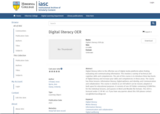
Digital literacy refers to the effective use of digital media platforms when finding, evaluating and communicating information. This involves a variety of technical and cognitive skills and competencies. The aim of this course is to introduce three key facets of digital literacy and increase your skills and competencies in these areas.
The course has three lessons: Information literacy
Digital wellness and identity
Communication and collaboration
This course is shared as an OER which can be reused, adapted or built upon for educational purposes.
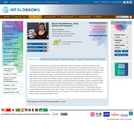
Scientists who are working to discover new medicines often use robots to prepare samples of cells, allowing them to test chemicals to identify those that might be used to treat diseases. Students will meet a scientist who works to identify new medicines. She created free software that ''looks'' at images of cells and determines which images show cells that have responded to the potential medicines. Students will learn about how this technology is currently enabling research to identify new antibiotics to treat tuberculosis. Students will complete hands-on activities that demonstrate how new medicines can be discovered using robots and computer software, starring the student as ''the computer.'' In the process, the students learn about experimental design, including positive and negative controls.
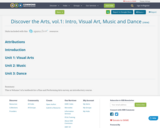
This is Volume 1 of a textbook for a Fine and Performing Arts survey, an introductory course.
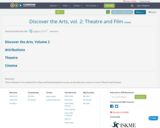
This is Volume 2 of a textbook for a Fine and Performing Arts survey, an introductory course. It covers Theatre and Cinema.

In this physics lab students will investigate whether Ohm's Law applies to common electric devices (incandescent light bulbs and LEDs). This activity is based on a PRISMS activity.
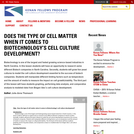
Biotechnology is one of the largest and fasted growing science-based industries in North Carolina. In this lesson students will have an opportunity to research some different Biotech companies in North Carolina. Secondly, students will grow live yeast cultures to model the cell culture development essential to the success of biotech companies. Students will manipulate different limiting factors such as temperature and the amount of media to measure the impact on cell growth/viability. The third part of this lesson will have students graphing, performing data analysis, and comparative analysis to modeled-data from Biogen Idecs cell culture development.
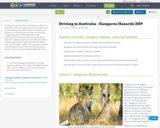
Driving in Australia outlines the Kangaroo - what it is, a description of the marsupial, where it lives, what it eats and its social and reproductive facts.
In Australia, the kangaroo is a driving hazard. It jumps onto the road unexpectedly and collides with vehicles and motorbikes.
This outlines some basic knowledge of where the collisions might occur and the time of day. It also describes some precautional measures, tips for what to do if a vehicle collides with a kangaroo and then some information about what to do with an injured kangaroo and it's possible still alive offspring or joey.

This set of resources is curated to complement ENG 102 as a writing workshop over a 15-week semester. Resouces are grouped around three weekly discussions that reflect content of the 102 course; all readings, viewings and exercises are meant to emphasize writing and editing skill building that is needed for academic, creative and professional writing.